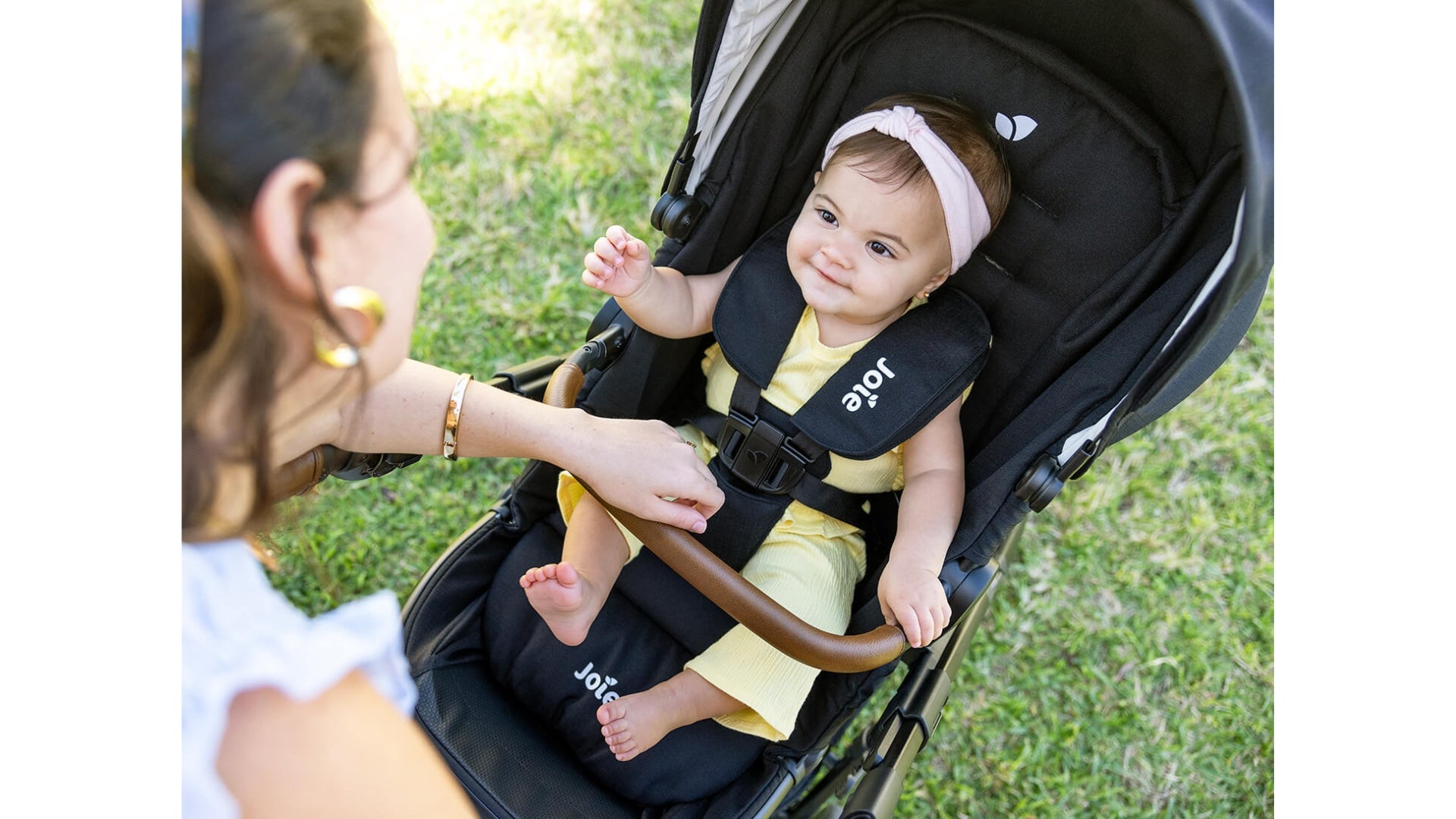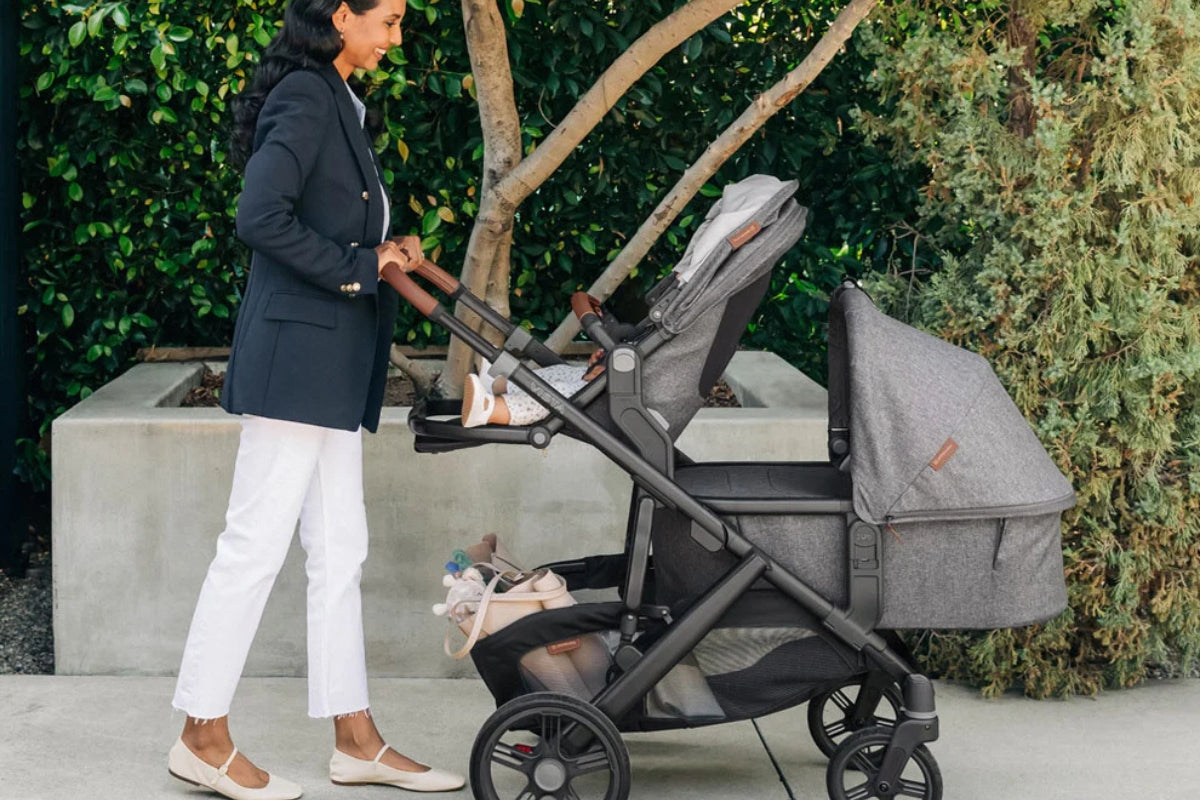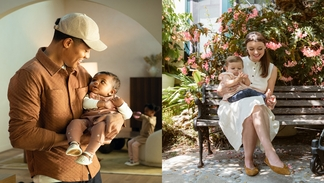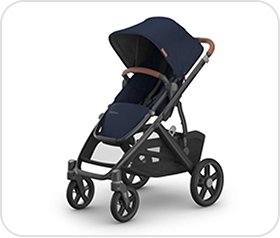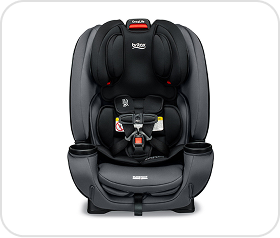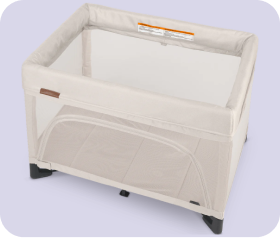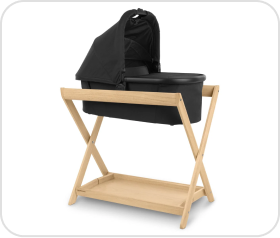
Baby Winter Care Guide for Keeping Your Little One Safe and Warm
Winter with a baby looks way cute on social feeds: tiny hats, matching coats, snowflakes in the background. But in real life, it’s a mix of second-guessing, overheating, and wondering if you’ve dressed them right for the car seat. The truth? Winter baby care doesn’t have to be complicated. Here’s what actually works to keep your little one safe, comfortable, and happy through the colder months.

How to Dress Your Baby for Winter: Your Clothes Plus One
A simple rule of thumb for winter dressing: layer your baby the same way you’d dress yourself, plus one extra layer. If you’re in a sweatshirt and jeans, your baby should wear a bodysuit, long-sleeved top, and pants. If it’s coat weather for you, it’s snowsuit-or-bunting weather for them (or a few well-placed blankets if you’re out and about in the stroller).
Layering Baby Clothes for Cold Weather
Layering keeps your baby warm without overheating and makes it easy to adjust for different environment (indoors, outdoors, sprinting to your car while shivering, etc.).
-
Base layer: Start with cotton or bamboo. They’re soft, breathable, and gentle on sensitive skin.
-
Insulating layer: Add a fleece footie or romper for warmth without bulk. (One-piece = less wrestling.)
-
Mid-layer: On especially cold days, add a lightweight sweater or vest.
-
Outer layer: A snowsuit or bunting with fold-over mittens and foot covers seals the deal. Waterproof is a bonus.
Once you’ve practiced a few times, layering becomes second nature. You’ll start checking the weather in the morning and instantly know what your baby should wear for the day ahead.

Winter Coats and Car Seats Don’t Mix
Here’s one every parent should know: bulky coats and car seats don’t go together. Puffy fabrics compress in a crash, leaving the harness dangerously loose. Even thick fleece can prevent a proper fit.
To keep your baby both warm and secure:
-
Choose low-pile fleece jackets that pass the pinch test.
-
Try car seat coats that layer over the harness.
-
Place a blanket over your baby after buckling in (never underneath).
-
Stick with car seat covers designed to go over the seat, not under your child.
If you’ve ever struggled to buckle your baby in and something felt off, you were right. A snug harness against their body—not their jacket—is the key to safety.
Read next: Why Your Child’s Winter Coat Can Make Their Car Seat Unsafe →
Don’t Forget the Accessories
Babies lose heat faster than adults, so pay attention to the extras: a hat that covers their ears, mittens that stay on (or clip to sleeves), and socks or booties that fit snugly. The goal is warmth without bulk—think “cozy but practical,” not “tiny Michelin baby.”
Choose the Right Fabrics
Natural fibers like cotton, bamboo, and wool help regulate temperature and wick away moisture. Synthetic fabrics can trap heat and make your baby clammy (never a good combo). Stick to breathable layers that you can easily swap if the temp suddenly climbs.

Babywear for Warmth and Snuggles
Wearing your baby keeps them close, content, and warm thanks to your own body heat. Just keep their airway visible and chin off their chest for safe airflow. If you live somewhere truly cold, try an insulated baby carrier cover! It works with your carrier instead of fighting against it.
Prepare for Strolling
A blanket over the stroller canopy might look snug, but it can trap heat and restrict airflow. Instead, dress your baby for the temperature, then tuck a blanket around them up to chest level. If you stroll often, check your stroller’s winter accessories—footmuffs, bunting bags, and weather shields designed to fit your model. They’ll keep your baby comfortable without overheating.
Protect Your Baby’s Skin
Cold air outside and dry heat inside can wreak havoc on delicate skin. Keep baths short (two or three times a week is plenty), use warm—not hot!—water, and moisturize right after with a gentle, fragrance-free lotion. Still noticing dry patches? Try a thicker balm and consider a cool-mist humidifier in the nursery. It adds moisture back into the air and helps ease stuffy noses, too.
Mind the Thermostat
During the day, aim for 68°–72°F; at night, 65°–68°F is ideal. Cooler temps help your baby sleep better and lower the risk of overheating. Skip loose blankets and stick with a wearable blanket or sleep sack instead. It’s a simple swap that adds warmth without the risk.
FAQs About Baby Care in Winter
How cold is too cold for a baby outside?
If it feels too cold for you, it’s too cold for your baby. Anything below freezing (32°F or lower) calls for short trips only. Bundle up, cover their extremities, and head back inside once you both start to chill.
What’s the best room temperature for a baby in winter?
68°F–72°F during the day, 65°F–68°F at night. Consistency helps your baby sleep soundly and stay comfortable.
Can my baby sleep in a hat?
Nope—skip it. Babies release heat through their heads, and wearing a hat indoors can cause overheating. Choose soft pajamas and a sleep sack instead.
How should I dress my baby for sleep in winter?
Think simple: a long-sleeved onesie and a mid-weight sleep sack. Adjust for the room temp, not the outdoor weather.
What helps with dry winter skin for babies?
Short baths, mild cleanser, and a moisturizer right after drying off. A humidifier can also help reduce dryness and static (bonus: better baby curls).
Additional Resources
Looking for more ways to simplify winter baby care? Explore our guides on Why Your Child’s Winter Coat Can Make Their Car Seat Unsafe, Best Strollers for Cold Weather and Snow, and Safe Sleep Essentials for Babies.
For safety information, visit trusted sources like the American Academy of Pediatrics
or the National Highway Traffic Safety Administration for expert guidance on baby sleep and car seat safety.
Have More Winter Care Questions?
Keeping your baby warm through the colder months isn’t about layering perfectly! It’s about finding what works for your family and staying cozy without overthinking it. If you have questions about what your baby really needs this season (or what you can skip), reach out anytime at cs@strolleria.com—we're always happy to help.




